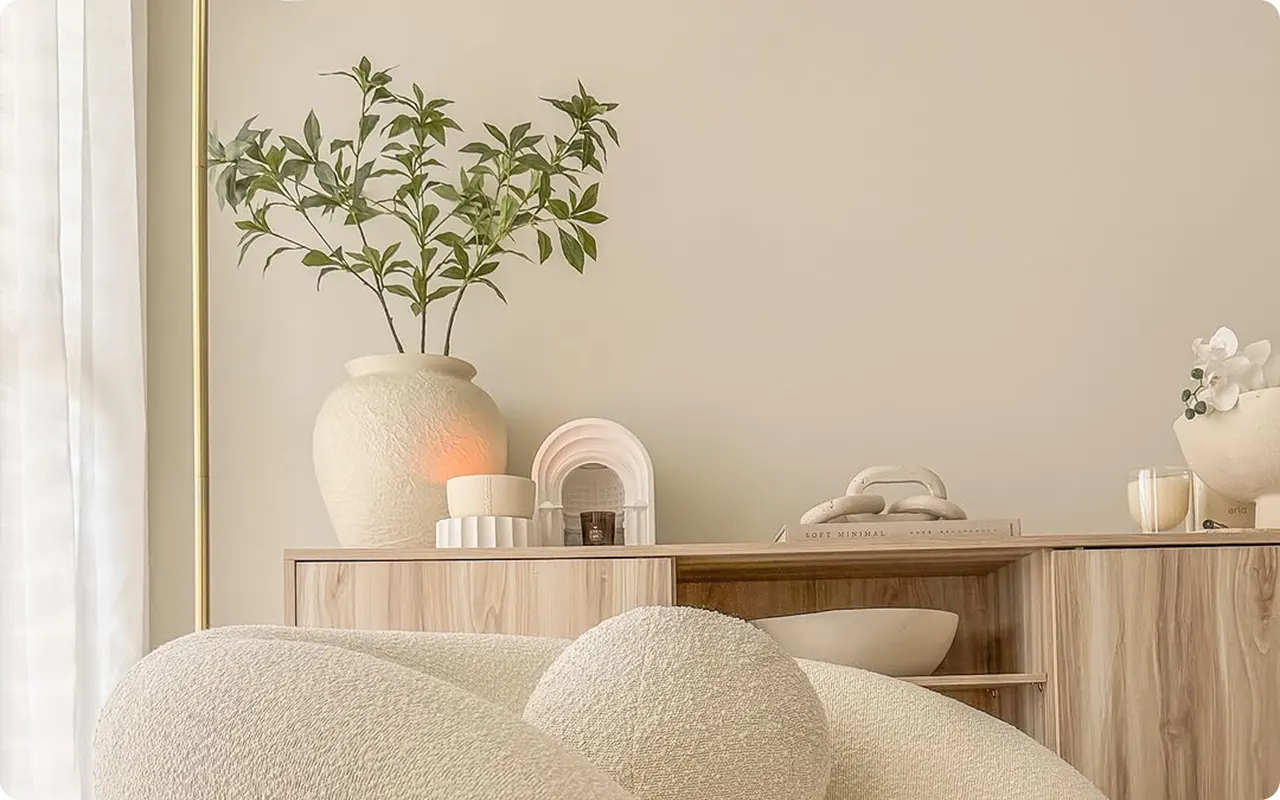If you’ve been keeping an eye on home design trends lately, you’ve probably noticed a quiet color takeover—mushroom paint colors are everywhere.
And honestly? I completely get the obsession. These soft, earthy neutrals walk the line between gray, beige, and taupe in the most effortless way.
They feel cozy but sophisticated, warm but still modern. For anyone who’s ever felt like greige was too cool or beige was too dated, mushroom tones hit that perfect sweet spot.
I’ve spent a lot of time swatching and studying these shades in real homes, and I can say with confidence: mushroom paint colors are incredibly versatile.
From walls to cabinets to trim, they work beautifully in just about every room of the house.
So if you’re looking for a neutral with a little more soul, this list is for you.
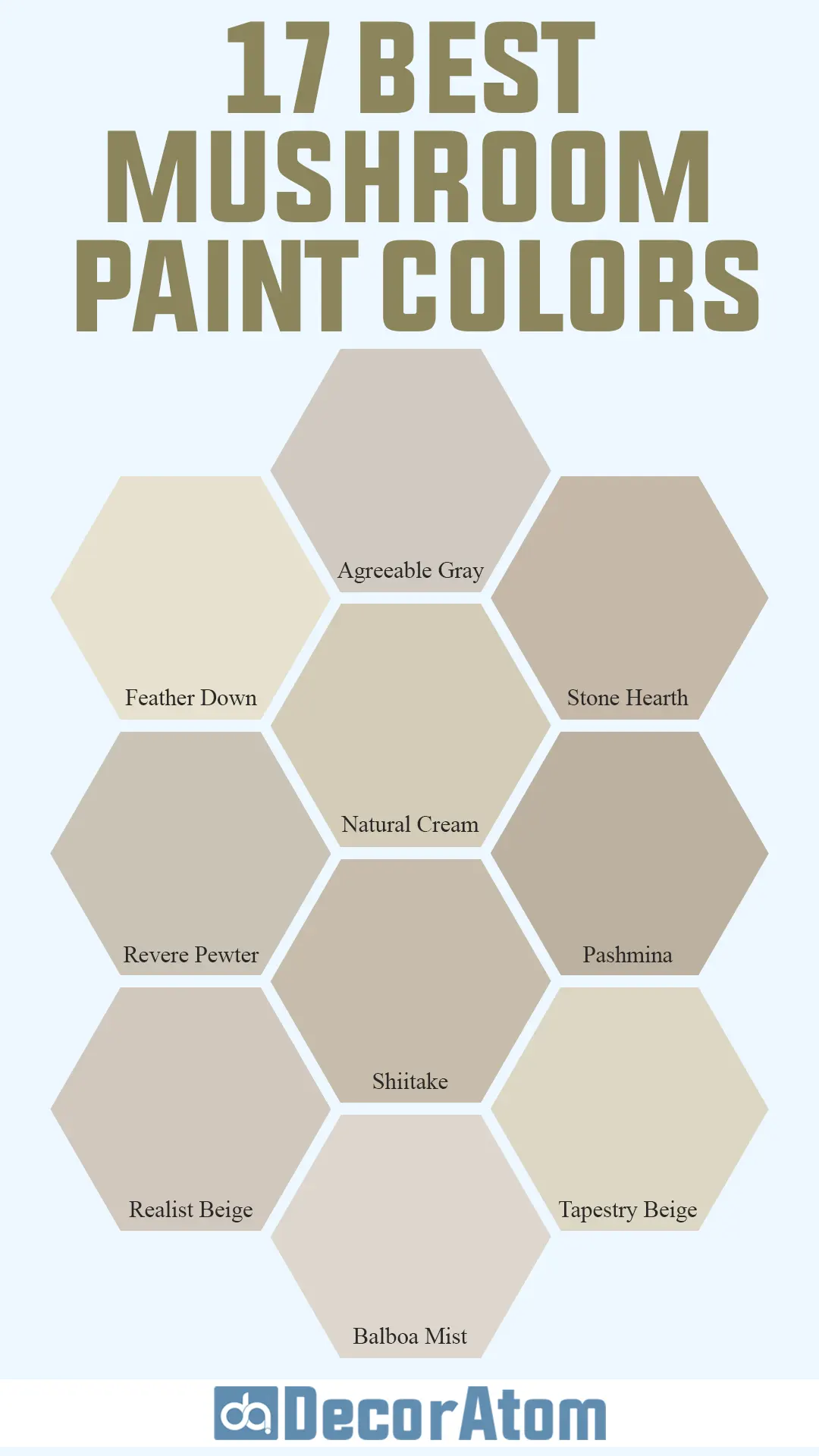
What are Mushroom Paint Colors?
Mushroom paint colors are those beautiful in-between shades that blend gray, beige, taupe, and sometimes a soft hint of brown or even green.
Think of the earthy tone of an actual mushroom cap—subtle, warm, and grounded. These shades have a softness that makes them incredibly versatile.
They’re not quite greige, not quite taupe, but somewhere in that cozy middle ground.
What sets mushroom colors apart is their chameleon-like nature—they tend to shift in appearance depending on lighting and surrounding colors, which gives them depth and complexity.
What I love most about mushroom paint colors is how balanced they are.
They’re not too warm or too cool, so they work beautifully in both modern and traditional spaces. They’re neutral but not boring, understated but never flat.
If you’re looking for a timeless, sophisticated neutral with just a touch of earthiness, mushroom tones might be exactly what your space needs.
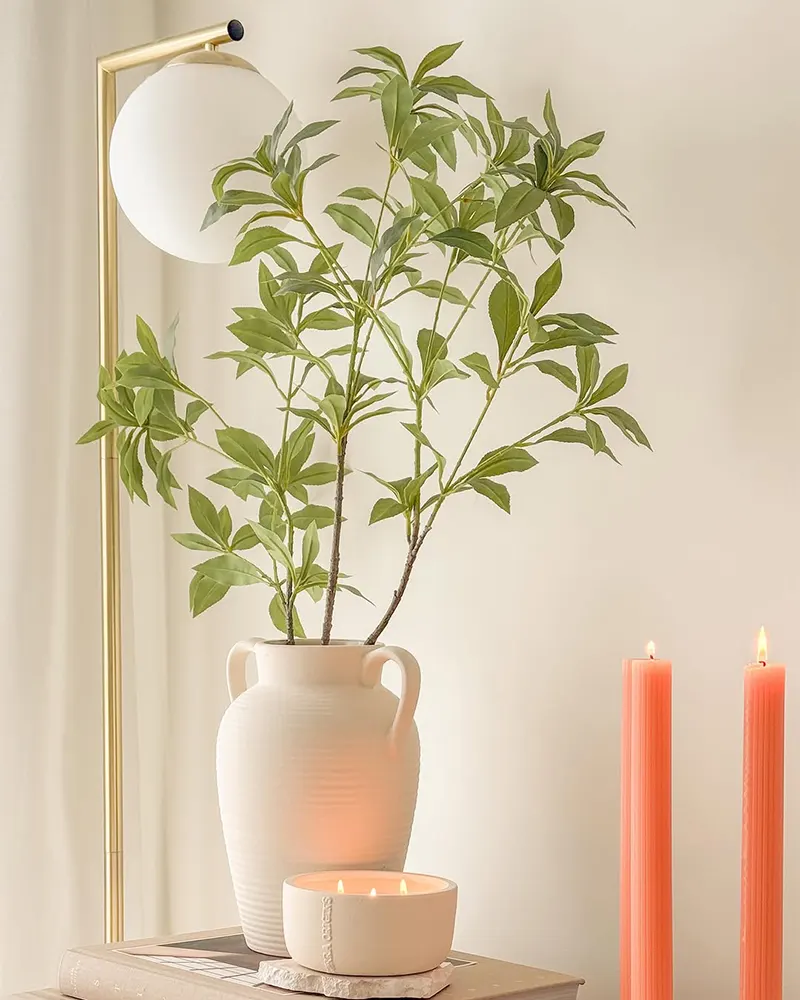
Where to Use Mushroom Paint Colors
Mushroom paint colors are incredibly adaptable, so you can use them just about anywhere in your home. Because they’re soft neutrals, they’re ideal for spaces where you want a calm and collected atmosphere.
- Living Rooms: A mushroom wall color creates a cozy, elegant backdrop that pairs well with natural textures like linen, wood, and leather.
- Kitchens: These tones are stunning on cabinetry, especially when paired with warm brass or matte black hardware.
- Bedrooms: Mushroom shades on walls or even furniture help create a soothing, restful retreat.
- Bathrooms: They work beautifully with marble, brass fixtures, and soft lighting for a spa-like feel.
- Entryways and Hallways: Mushroom paint can subtly elevate transitional spaces without overwhelming them.
You can also get creative—use them on trim for a tone-on-tone look, or try a mushroom color on your interior doors for a fresh, modern take.

Colors to Pair with Mushroom Paint Colors
One of the best things about mushroom paint colors is how easy they are to coordinate with. Their balanced blend of warm and cool tones means they play well with a wide variety of palettes. Here are some favorites that work beautifully with mushroom shades:
- Warm Whites: Soft whites like Benjamin Moore White Dove or Sherwin Williams Alabaster highlight the creamy side of mushroom colors and keep everything light.
- Dusty Blues and Muted Greens: These tones provide gentle contrast without overpowering the softness of the mushroom base.
- Charcoal and Deep Browns: For a more dramatic, moody palette, pair mushroom with deeper earth tones.
- Blush and Mauve: These muted pinks can bring out the warmth in mushroom paint, creating a cozy, romantic vibe.
- Black or Aged Bronze Accents: Hardware and fixtures in darker finishes add just the right amount of contrast to anchor a mushroom space.
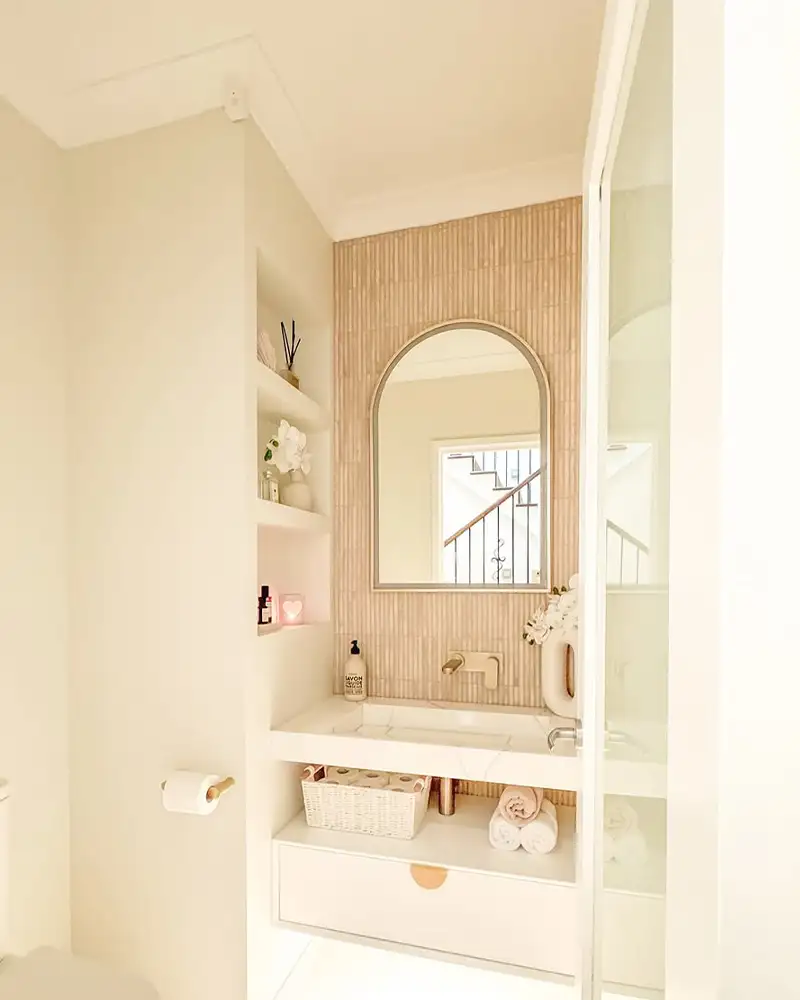
What Is The Most Popular Mushroom Paint Color For 2025?
For 2025, Sherwin Williams Shiitake is emerging as one of the most popular mushroom paint colors—and it’s easy to see why.
It strikes the perfect balance of warmth and subtle gray undertone, making it feel modern but still cozy. Designers and homeowners alike love how versatile it is.
Whether you’re painting kitchen cabinets, a primary bedroom, or an entire open-concept space, Shiitake adds just the right amount of earthiness without feeling heavy or dated.
Another favorite gaining traction this year is Benjamin Moore Revere Pewter.
While it’s been around for years, it’s having a bit of a renaissance—especially in spaces that blend traditional architecture with modern styling.
It’s a little deeper than some of the other mushrooms on the list, which makes it feel grounded and rich.

Tips for Choosing The Best Mushroom Paint Colors
Choosing the right mushroom paint color can be tricky since lighting and surroundings can drastically change how these nuanced shades look. Here are a few tips to help you get it just right:
- Test in Your Space: Always sample the color in your own home before committing. Look at it in natural daylight, artificial lighting, and at different times of day. Mushroom tones can shift more than you expect.
- Consider the Undertones: Some mushroom shades lean more beige or taupe, while others have a whisper of green, pink, or purple. Think about what works with your existing furniture and finishes.
- Use with Texture: Mushroom paints really shine when layered with texture—think wood beams, woven rugs, or linen drapery. These tones bring out the beauty in natural materials.
- Think About Room Function: For a bright, airy feel, go with a higher LRV mushroom like Feather Down or Pale Oak. For more drama and coziness, deeper tones like Pashmina or Drop Cloth might be your match.
- Pair Thoughtfully: Look at adjacent room colors and flooring. Mushroom paint should feel like a bridge—connecting rooms, tones, and styles with ease.
Top 17 Mushroom Paint Colors
Here are my favorite Mushroom paint colors to decorate with.
1. Benjamin Moore Feather Down
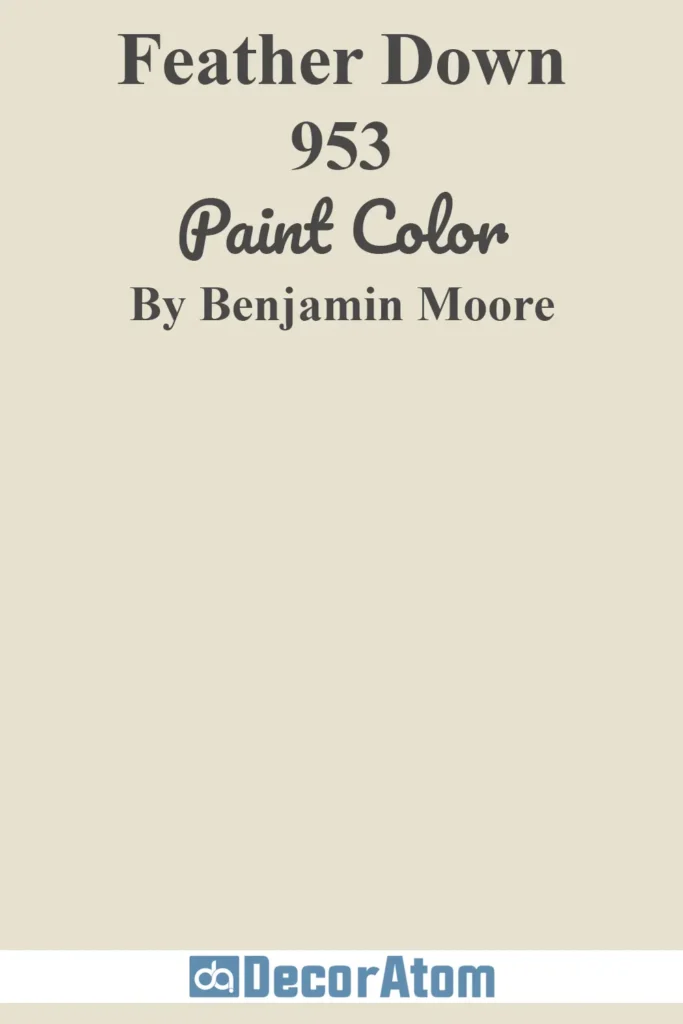
Feather Down is one of the softest, lightest takes on mushroom I’ve come across.
It’s an off-white that carries whispers of gray and beige—almost like warm cream with a sophisticated edge.
With an LRV of 73.16, this is a gorgeous option if you want that cozy mushroom vibe without darkening your space.
It pairs beautifully with crisp whites and muted natural materials.
2. Benjamin Moore Natural Cream
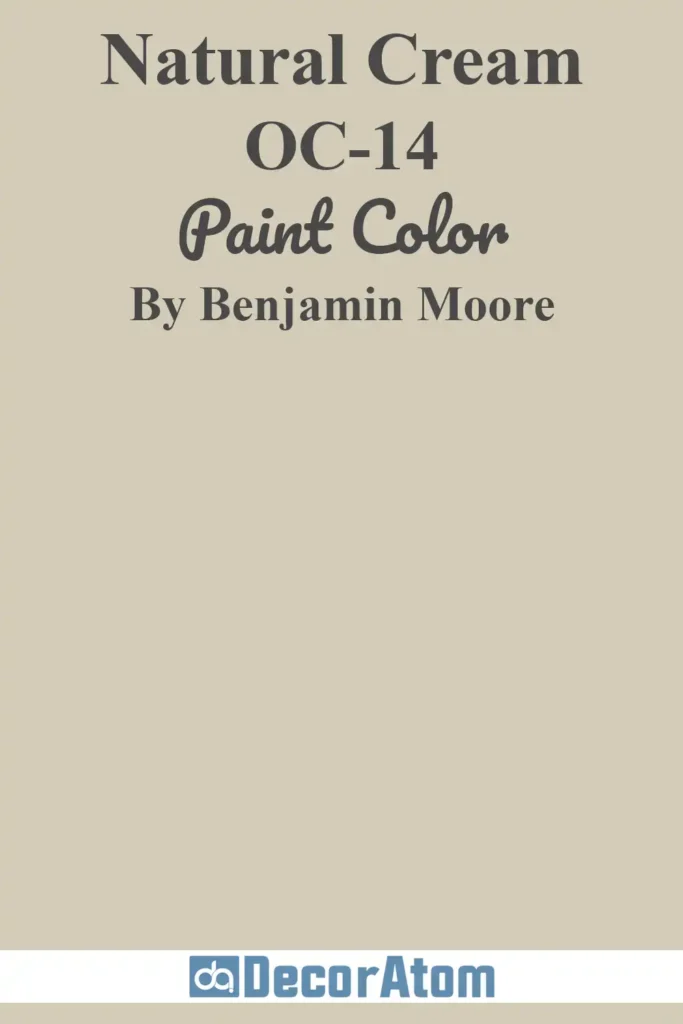
Natural Cream lives up to its name—it feels calm, grounded, and truly natural.
It sits right in that sweet spot between cream, greige, and mushroom, shifting subtly depending on the light.
With an LRV of 64, it’s a bit deeper than you might expect, which gives it more presence on walls or cabinetry.
I love how it works in both traditional and modern homes—it’s the kind of color that never feels forced.
3. Farrow and Ball Drop Cloth
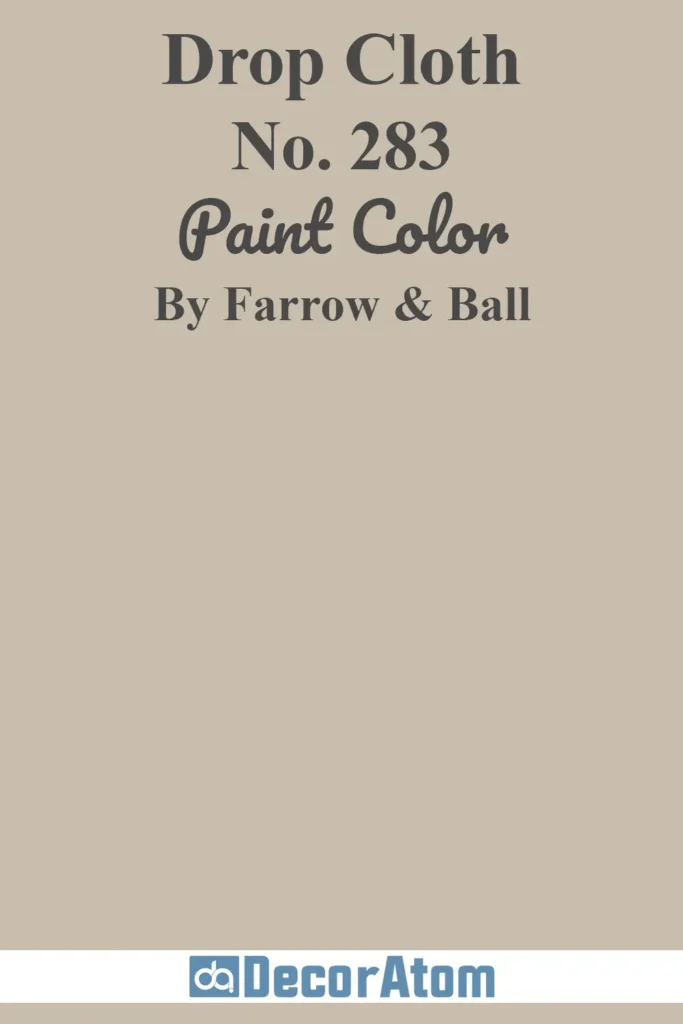
Drop Cloth is a rich, warm greige with yellow and gray undertones that help it land squarely in mushroom territory.
It has an elegant, almost vintage vibe that looks incredible on walls, furniture, or even kitchen cabinetry.
With an LRV of 51, it adds depth without feeling heavy, making it a fantastic choice for cozy, lived-in spaces.
4. Benjamin Moore Stone Hearth
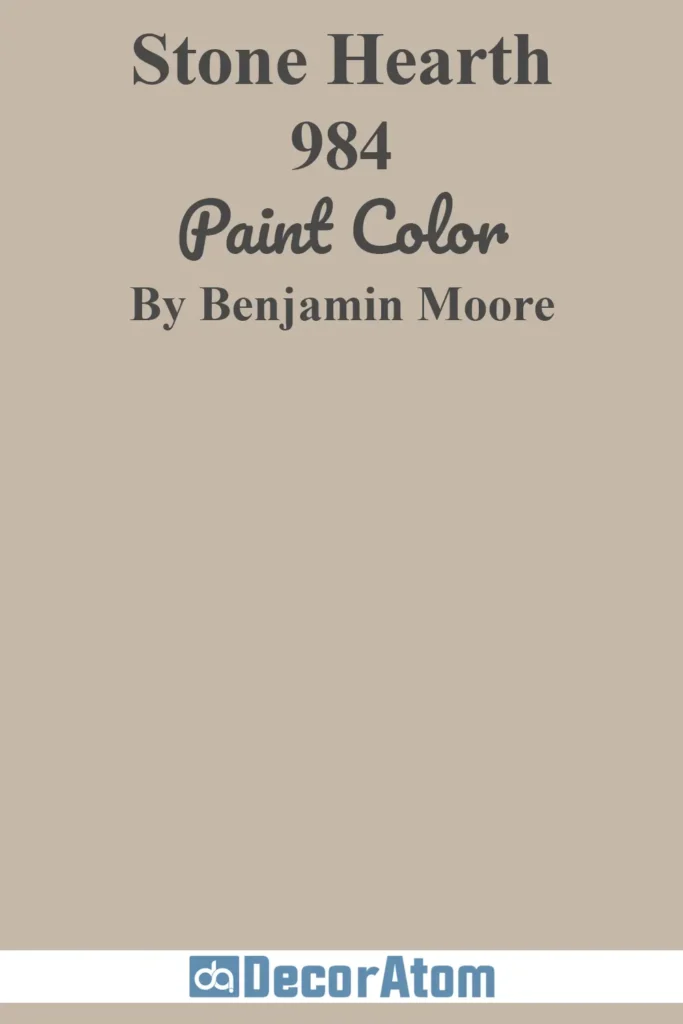
Stone Hearth is one of those chameleon mushroom shades—it shifts and transforms with the light.
It has subtle purple and brown undertones that give it depth and warmth.
With an LRV of 48, this one makes a real statement, especially when paired with creamy whites or natural wood tones.
It’s moody in the best possible way and incredibly inviting.
5. Benjamin Moore Edgecomb Gray
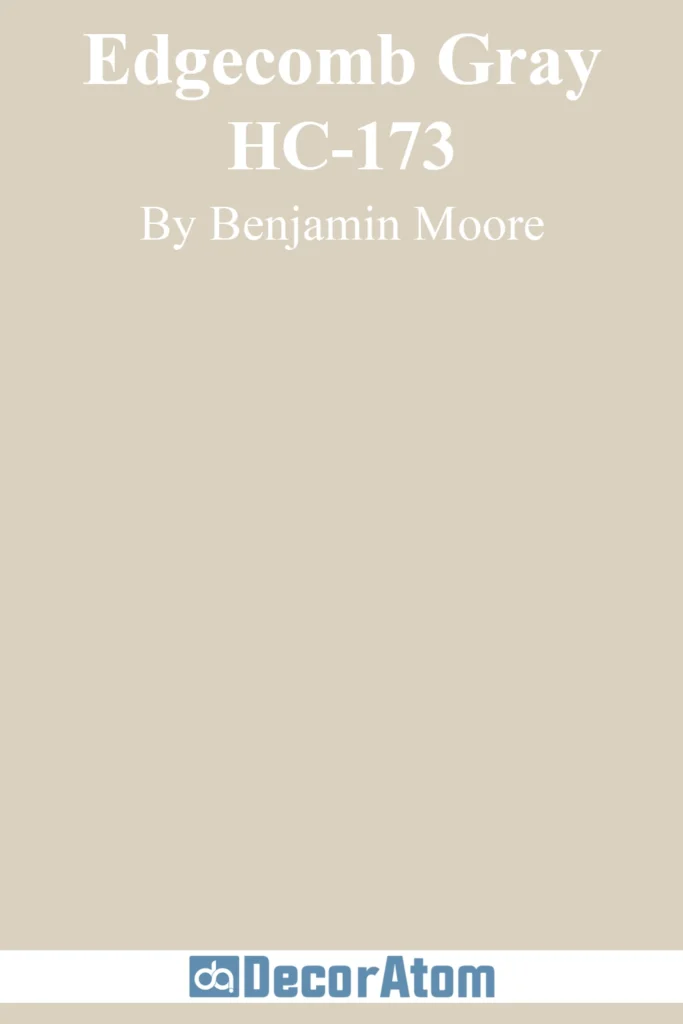
Edgecomb Gray is a longtime favorite for a reason. It’s a soft gray-beige that can easily lean mushroom depending on lighting and surroundings.
On a sunny day, it can feel a bit more creamy; in low light, the mushroomy undertones really come forward.
With an LRV of 63, it’s light enough for full-room use, but still offers that warm, grounded character you’d expect from a mushroom tone.
6. Benjamin Moore Revere Pewter

Revere Pewter is practically the poster child for mushroom paint colors.
It’s a perfect blend of gray and beige that feels timeless, elegant, and versatile.
With an LRV of 55, it’s a true mid-tone, which means it adds a gentle richness to a space without overwhelming it.
This one has been a designer favorite for years—and it’s not hard to see why.
7. Sherwin Williams Shiitake
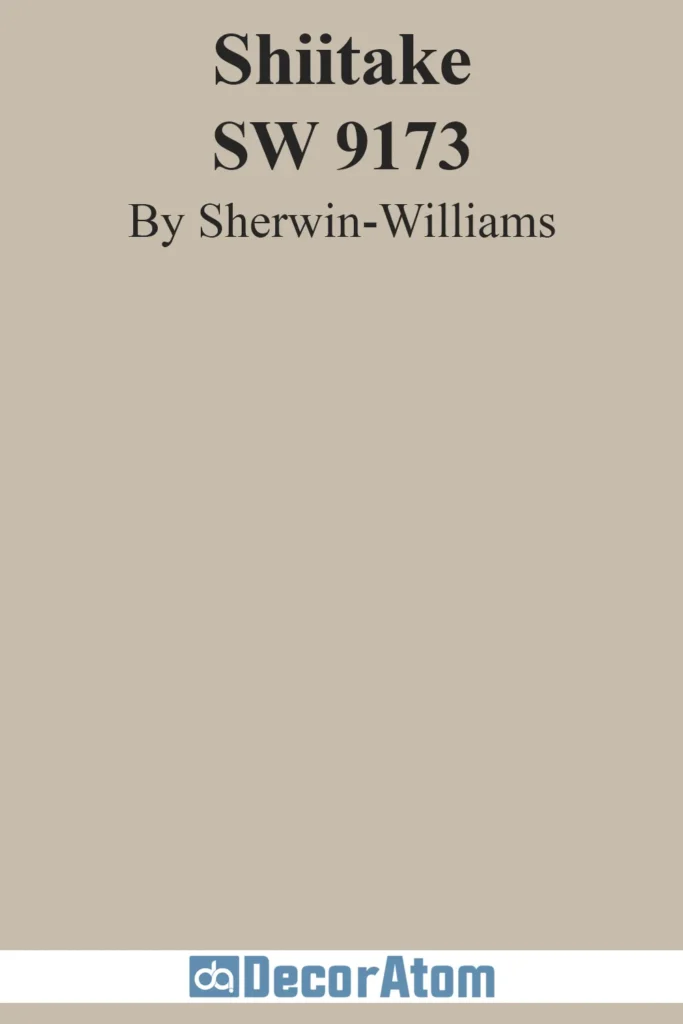
With a name like Shiitake, it’s no surprise this color nails the mushroom aesthetic.
SW Shiitake is a warm, earthy neutral with just enough gray mixed in to keep things interesting.
It’s not too dark, not too light—just the right kind of subtle.
The LRV is 51, so it does carry a bit of weight, making it perfect for cabinetry or cozy living spaces.
8. Sherwin Williams Loggia

Loggia is like Shiitake’s slightly deeper, more dramatic cousin.
With an LRV of 48, it offers a bit more contrast, which is great for creating mood in a space without going full-on dark.
It’s warm, muted, and incredibly versatile—one of those mushroom tones that plays beautifully with stone, leather, wood, and other earthy textures.
9. Benjamin Moore Pale Oak

Pale Oak is soft, dreamy, and wonderfully subtle. It leans warm, with hints of taupe and pinkish-beige that peek through in the right light.
While not the deepest mushroom tone on this list, it definitely fits the family, especially in shaded rooms or under warm lighting.
With an LRV of 69, it’s bright enough to keep things airy while still offering that cozy, grounded feel.
10. Benjamin Moore Pashmina

Pashmina is one of the darkest mushroom tones in this group—and I absolutely love it for that reason.
It has an LRV of 43, which gives it real presence, especially when used with crisp white trim or lighter furnishings.
The color itself feels like a warm hug: earthy, deep, and effortlessly elegant.
It’s a beautiful choice for bedrooms, dining rooms, or even kitchen islands when you want a bit of boldness without going full charcoal or black.
11. Farrow and Ball French Gray

French Gray is one of those colors that keeps you guessing in the best way.
While it’s called “gray,” it’s really more of a gentle mushroom shade with distinct green and gray undertones that come and go depending on the light.
It has an LRV of 44, which gives it a rich, grounded feel—perfect for moody rooms, cabinetry, or even walls if you want a cozy, heritage-inspired atmosphere. It’s understated, but far from boring.
12. Sherwin Williams Realist Beige
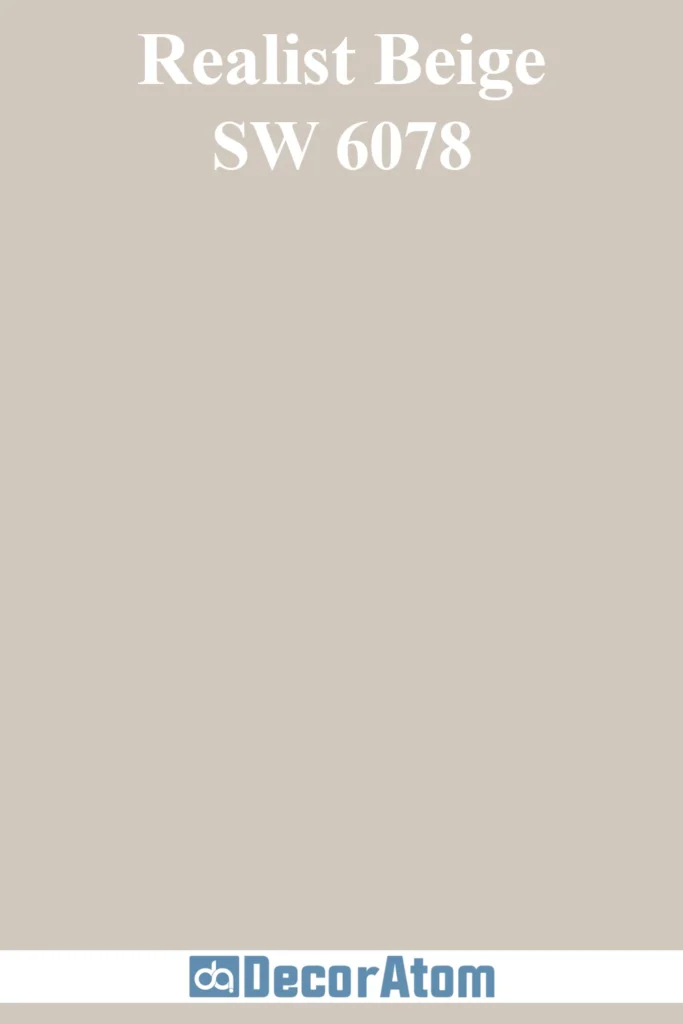
Realist Beige is a warm, refined mushroom-beige hybrid that feels tailored but relaxed.
It doesn’t scream for attention, but it brings an effortless sense of balance to a room.
With an LRV of 58, it walks the line between light and mid-tone beautifully.
What I love most is how well it plays with both warm and cool accents, which makes decorating around it feel like a breeze.
13. Sherwin Williams Accessible Beige

Accessible Beige is one of Sherwin Williams’ most-loved colors—and for good reason.
It’s a classic greige with soft, earthy undertones that give it that distinct mushroom vibe.
The warmth in this color keeps it feeling welcoming, while the touch of gray adds just enough modern edge.
Its LRV of 58 makes it a very user-friendly neutral—it works on walls, cabinetry, trim, you name it.
14. Benjamin Moore Balboa Mist
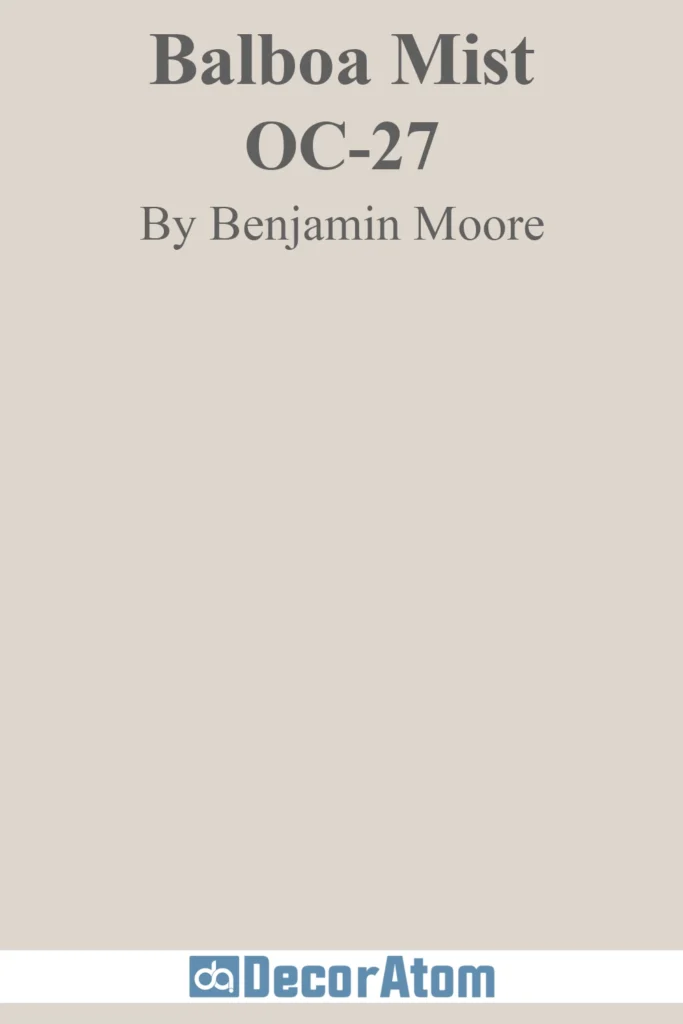
Balboa Mist is on the lighter end of the mushroom spectrum, but still rich enough to offer personality.
It’s a soft greige with a whisper of violet undertones that can make it feel almost ethereal in certain lighting.
With an LRV of 67, it’s a fantastic whole-home color if you want that light, airy feeling with a grounded, organic twist. It’s subtle, elegant, and never feels flat.
15. Sherwin Williams Agreeable Gray

Agreeable Gray is the kind of shade that lives up to its name.
It’s agreeable with practically any palette—soft, warm, and quietly mushroom-y.
The mix of beige and gray is so balanced that it works effortlessly in nearly every room.
With an LRV of 60, it brightens a space while still offering that cozy, muted aesthetic that mushroom tones are known for. It’s a go-to for good reason.
16. Farrow and Ball Skimming Stone
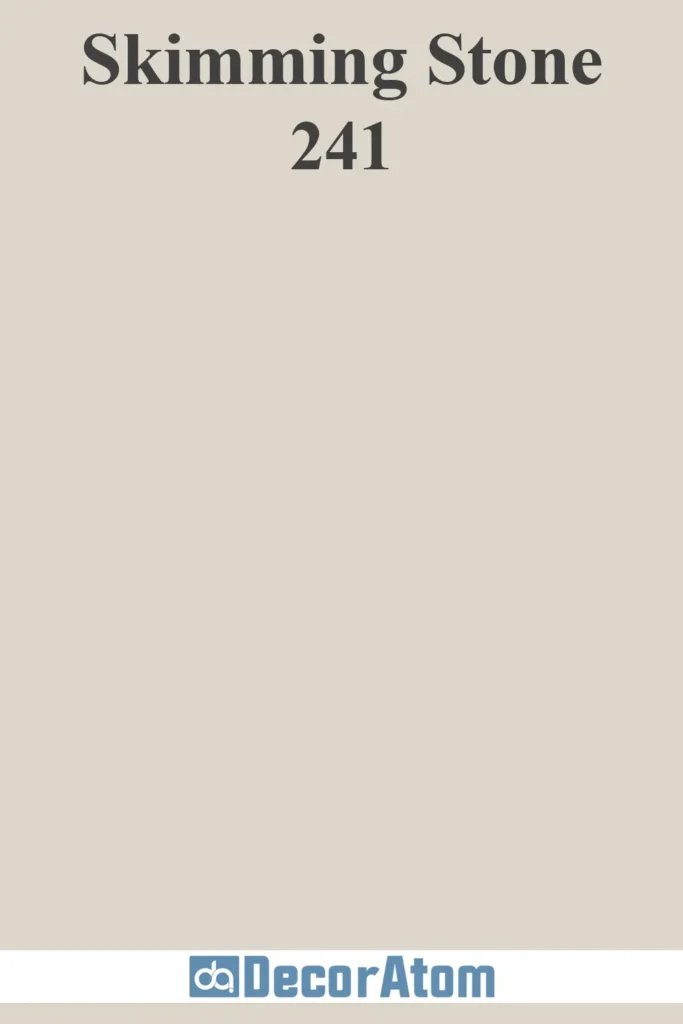
Skimming Stone is refined, relaxed, and deeply comforting.
It’s a pale mushroom-beige with subtle pink and gray undertones that give it a warm, natural vibe.
What I really love about this one is how it can bring a sense of calm into a space without disappearing completely.
It feels clean but never cold—perfect for bedrooms, bathrooms, or any room that needs a touch of softness.
17. Benjamin Moore Tapestry Beige

Tapestry Beige is a smooth, creamy greige with warm undertones that lean toward taupe.
It’s one of those in-between colors that changes subtly throughout the day, sometimes showing off more warmth, other times leaning into its muted, mushroom character.
With an LRV around 66, it keeps things feeling light but never stark.
It’s a great choice if you want a neutral that has just a little more soul.

